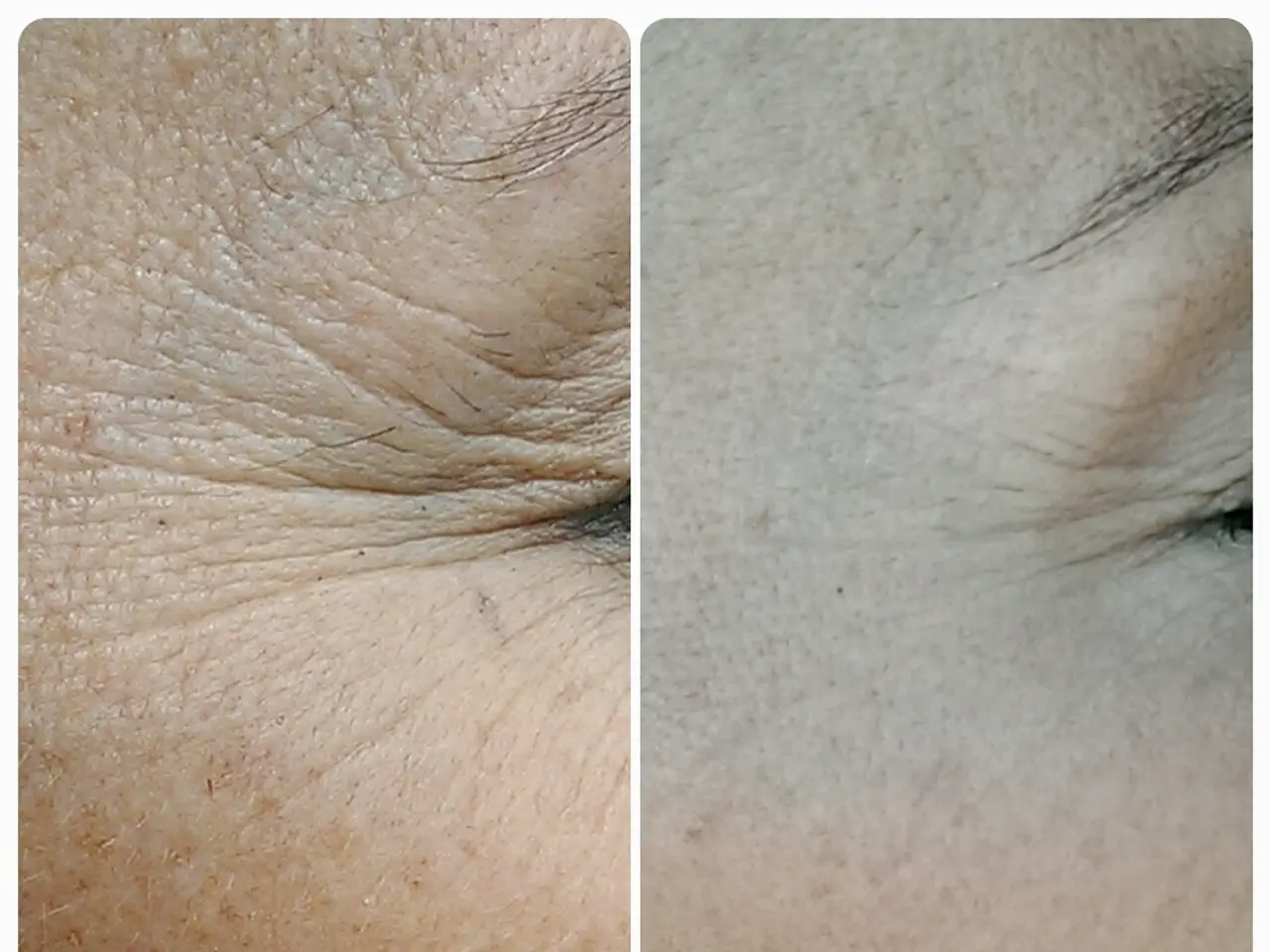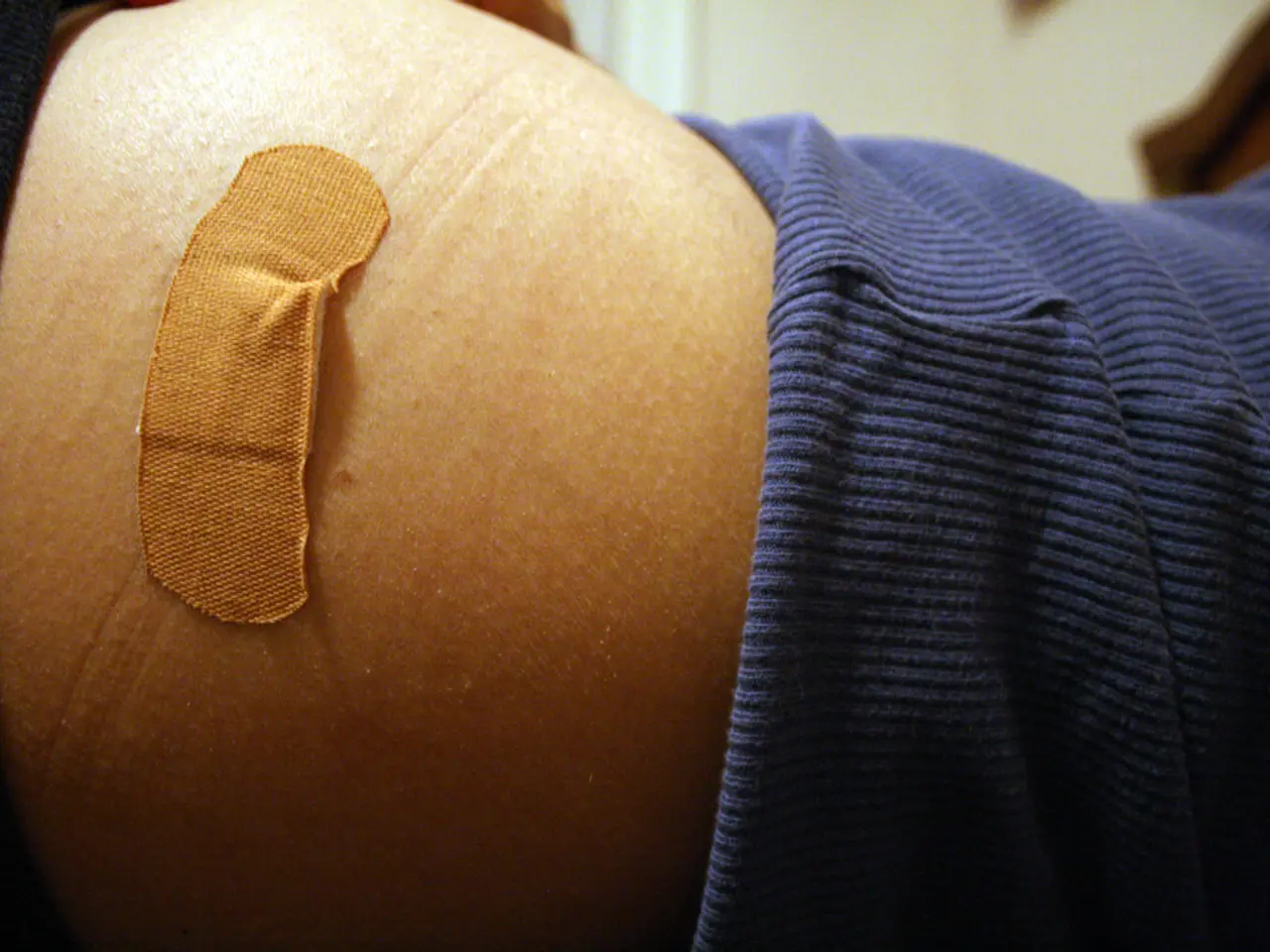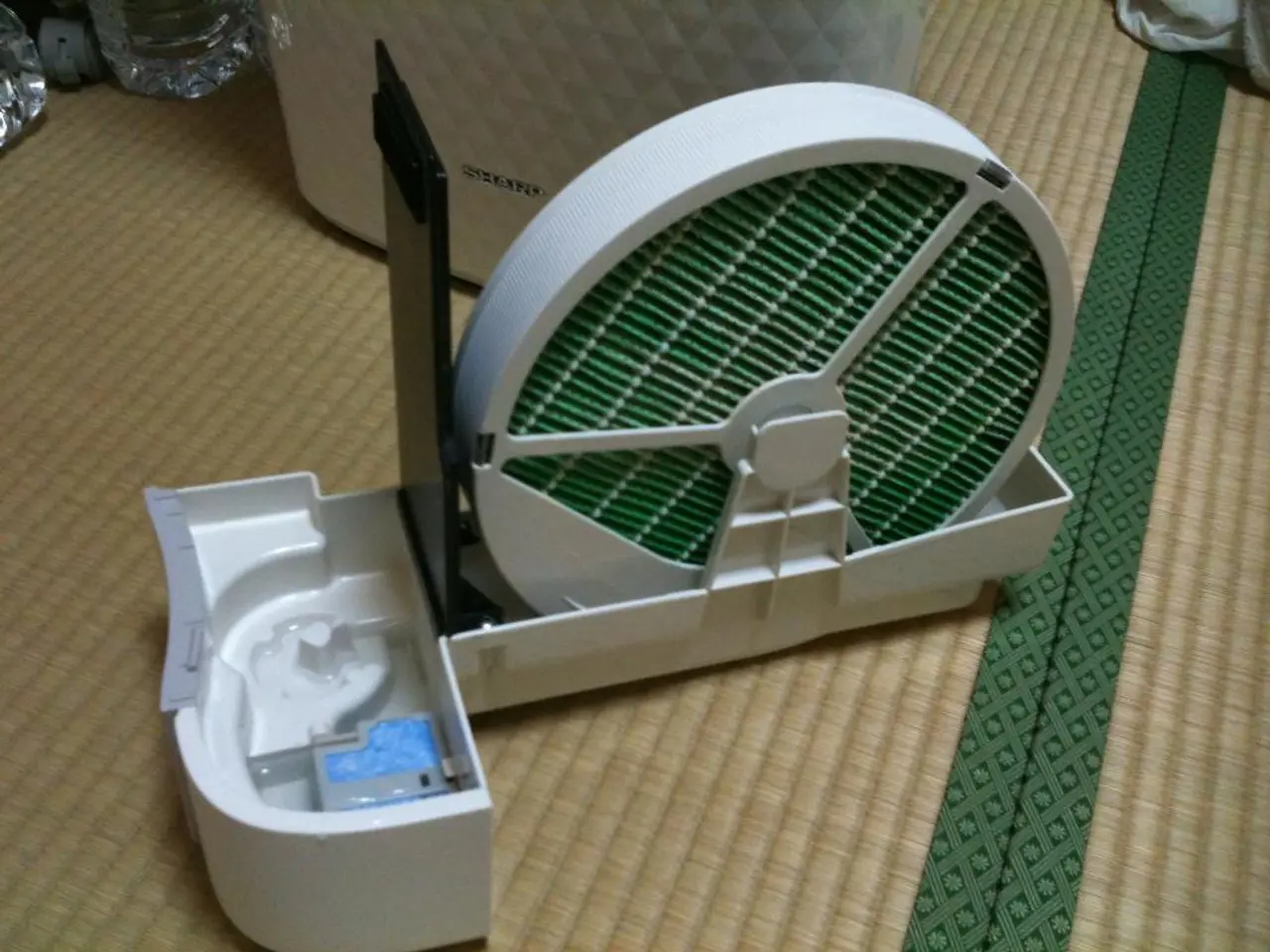At-home skincare methods: Techniques for self-exfoliation.
In the realm of skincare, exfoliation is a crucial step that helps improve the appearance of the skin by stimulating the turnover of new cells on the surface. The American Academy of Dermatology (AAD) recommends using different techniques for chemical and physical exfoliators.
Exfoliation can be done at home using two main methods: mechanical (using tools like sponges, facial brushes, washcloths) and chemical (using acids like glycolic acid and salicylic acid). Different skin types respond distinctly to these methods, so it's essential to choose exfoliants accordingly to avoid irritation and optimize results.
Oily Skin
With excess sebum production, oily skin benefits from exfoliants that unclog pores and reduce shine. Chemical exfoliants containing BHAs (like salicylic acid) are effective for oily skin because they penetrate pores and reduce buildup. For natural physical exfoliants, gentle scrubs with smooth particles (like finely ground oatmeal or rice powder) can be used once or twice weekly, but avoid harsh abrasives to prevent irritation.
Dry Skin
Characterized by tightness and flakiness, dry skin needs gentle exfoliation to remove dead cells without stripping moisture. Enzyme exfoliants derived from papain (papaya) or bromelain (pineapple) are suitable natural options because they gently dissolve dead skin without abrasiveness. Physical scrubs should be avoided or used very sparingly, focusing instead on moisturizing afterward to maintain barrier function.
Combination Skin
Since this involves oily zones (typically T-zone) and dry areas (cheeks), a combination approach works best. Using salicylic acid-based exfoliants on oily areas and gentle enzyme or PHA exfoliants on drier zones can balance care. Natural exfoliants like a mild oatmeal scrub on cheeks and a gentle chemical exfoliant on the T-zone are recommended.
Sensitive Skin
Highly reactive skin responds poorly to aggressive scrubs. Natural enzyme exfoliants from papaya or pineapple are preferred due to their mild action. Limiting exfoliation frequency to once every two weeks and avoiding physical scrubs reduces irritation risk. Products with soothing botanicals such as calendula or oat extract also help protect the sensitive barrier.
Normal Skin
Generally tolerant and balanced, normal skin can accommodate gentle physical exfoliants (like jojoba beads or finely ground nuts) and mild chemical exfoliants used 1-2 times weekly to maintain smoothness and radiance.
When exfoliating at home, start slowly (1-2 times a week) and always follow with moisturization and sun protection, as exfoliation increases skin sensitivity to UV rays. It's also essential to note that a person should not exfoliate if they have wounds, open cuts, or sunburn on their skin. Over-exfoliation can damage the skin and cause redness or acne breakouts.
Oatmeal and sugar are examples of natural exfoliants that people can use on their skin. Oatmeal, particularly colloidal oatmeal, has active properties that may benefit the skin and can be an effective exfoliator. Sugar, due to its rough texture and shape, can be used as a physical exfoliant. The loofah sponge is another type of sponge used for scrubbing and exfoliating skin.
For acne-prone skin, it may be advisable to avoid mechanical exfoliation methods and use chemical exfoliants or other methods like beta hydroxy acid (BHA). People with oily, thicker skin may require stronger mechanical or chemical exfoliants.
In conclusion, understanding your skin type and choosing the right exfoliant is key to achieving healthy, glowing skin. Chemical exfoliants tend to be safer and more effective for facial skin, especially for sensitive or acne-prone types, while physical scrubs are better reserved for body areas with thicker skin. Enzyme-based natural exfoliants (papain, bromelain) offer a gentle, natural option across most skin types, particularly sensitive or dry skin. Always remember to exfoliate responsibly and maintain good skincare practices to ensure the best results.
- For oily skin, chemical exfoliants containing salicylic acid are effective in unclogging pores and reducing shine, while natural physical exfoliants with smooth particles, like finely ground oatmeal or rice powder, can be used gently to avoid irritation.
- In sensitive skin, natural enzyme exfoliants derived from papaya or pineapple are preferred due to their mild action, and limiting exfoliation frequency to once every two weeks helps reduce irritation risk.
- When choosing acne-targeting skincare products, it may be advisable to avoid mechanical exfoliation methods and opt for chemical exfoliants or other methods like beta hydroxy acid (BHA), as they are generally safer and more effective for acne-prone skin.




